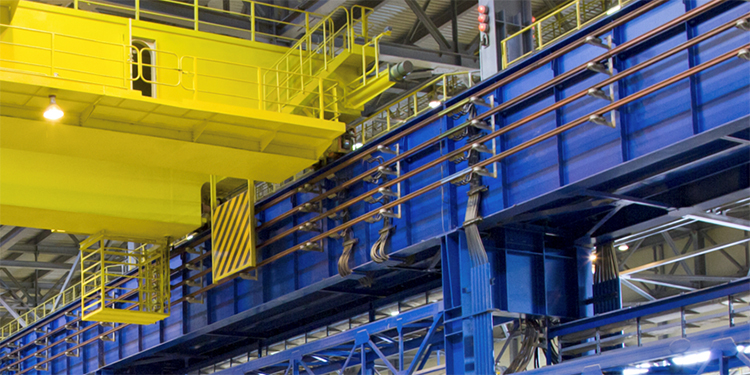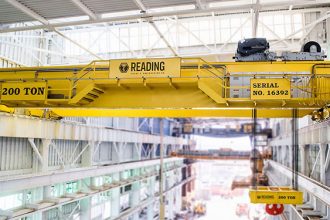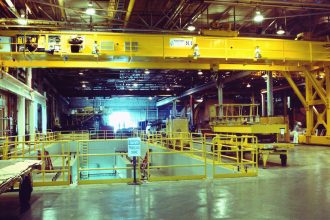Grounding Requirements When Powering An Overhead Lifting System With Bare Uninsulated Conductor Bar Systems

Conductor bar systems are frequently used to supply power to and electrify an overhead crane and hoist. They can be used on both indoor and outdoor overhead lifting systems. The Occupational Health and Safety Administration standard OSHA 1910.179 defines two primary types: Runway (or main) electrical conductors installed on the crane’s (or monorail’s) runway; and Bridge electrical conductors located along the bridge structure of a crane to provide power to the trolley.
While many conductor bar systems are covered, those located along a runway don’t necessarily have to be. Bare uninsulated conductor bar systems — typically three lengths of hard drawn copper wire stretched between two points along the length of the runway — can be used so long as their placement is not at risk of coming into contact with a hoist cable or other crane component, or if the crane wheels can ensure a continuous ground unimpeded by bearings and lubricants. If either of these conditions cannot be guaranteed, the three uninsulated conductor bars must be connected to a grounding conductor, often referred to as the 4th bar.
Requirements governing the safe installation and usage of conductor bar systems are covered in the National Fire Protection Association’s NFPA 70 National Electrical Code NEC Article 610.
- Section 610.13B specifically addresses contact conductors, stating: “Contact conductors along runways, crane bridges, and monorails shall be permitted to be bare and shall be copper, aluminum, steel, or other alloys or combinations thereof in the form of hard-drawn wire, tees, angles, tee-rails, or other stiff shapes.”
- Section 610.61 discusses grounding requirements, saying: “The trolley frame and bridge frame shall not be considered as electrically grounded through the bridge and trolley wheels and its respective tracks. A separate bonding conductor shall be provided.”
When sizing the conductor bars, there are several factors to consider. These include the length of the runway, the location(s) of the power feed(s), and the power draw the overhead handling system requires. To determine the system’s overall power draw, the total number of equipment components and the specific amp draw of each at full power must be accounted for, along with the draw required by any powered below-the-hook lifting devices. NEC Article 610 provides guidance on proper ampacity sizing.
If an existing bare conductor bar system that lacks a grounding bar is being replaced, the 4th bar should be added. All 4th ground bars should be placed in an easily accessible location in relation to the other three conductors.
Finally, conductor bars are not the only means to electrify overhead handling equipment. In applications where they are not a feasible option due to the complexity of the system or the environment, festoon cable should be used instead.
Want more details about the safe installation and use of overhead cranes? The Crane Manufacturers Association of America (CMAA), offers CMAA Specification 79: Crane Operator’s Manual, and CMAA Specification 80: Below-the-Hook Lifting Device Operator’s Manual.



